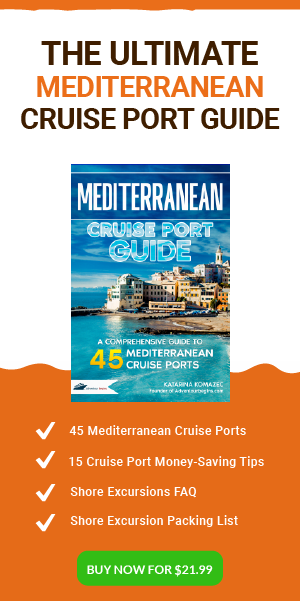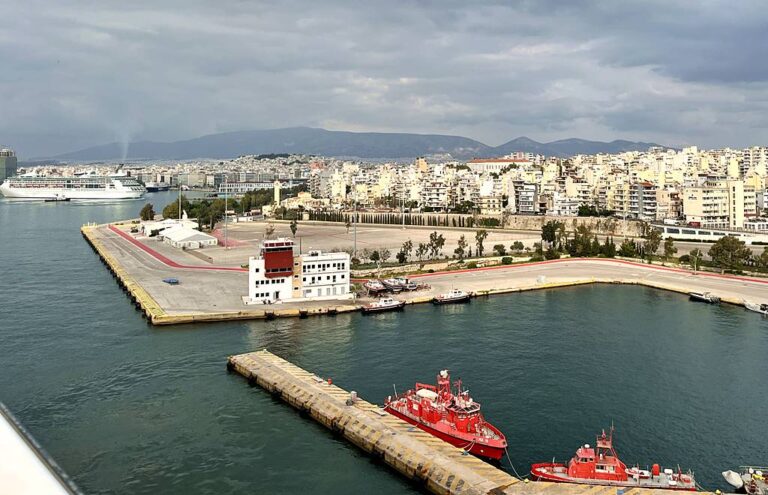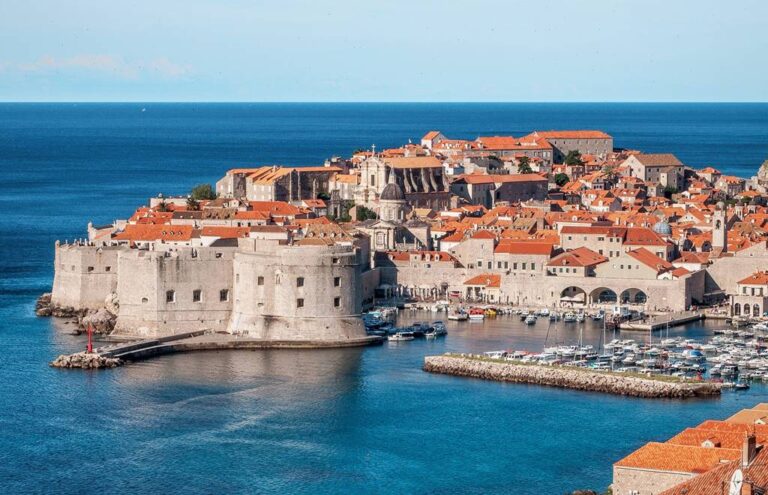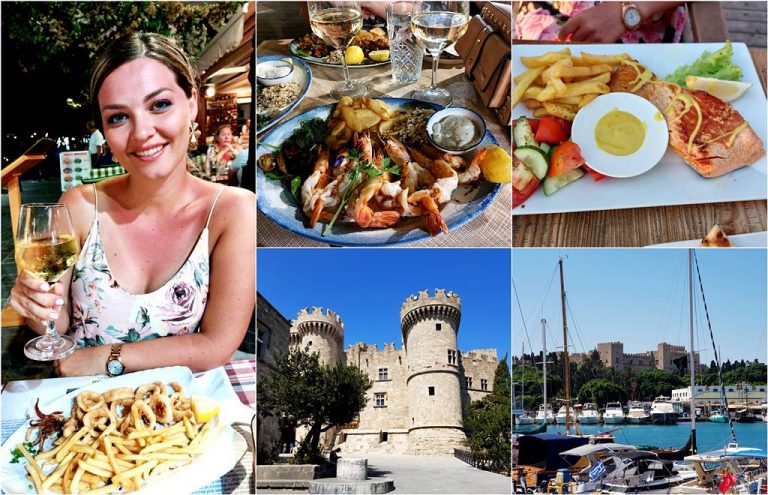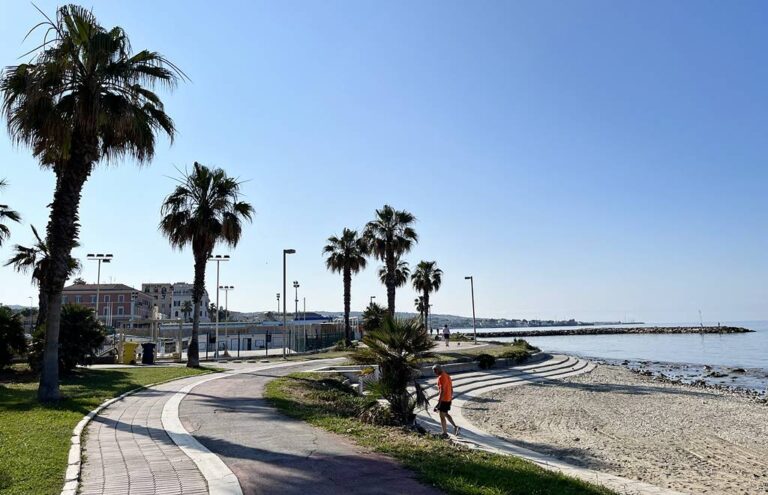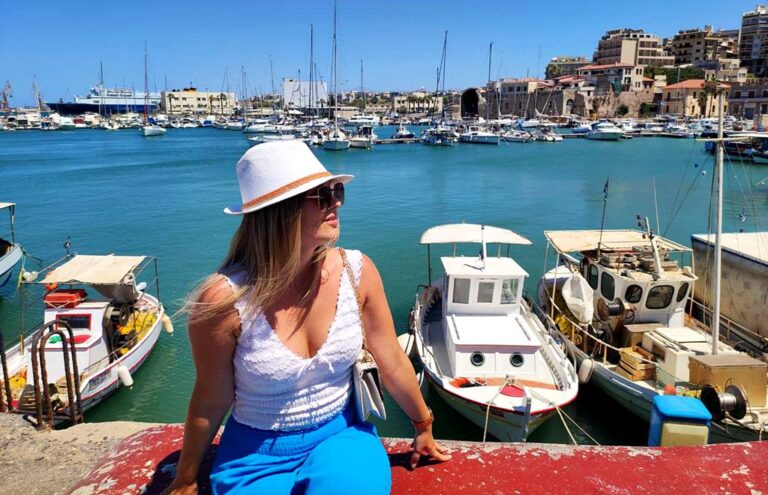Santa Cruz de La Palma Cruise Port Guide: Top Things to Do
Some links in this post are affiliate links. If you book through them, I may earn a small commission at no extra cost to you. Thanks for supporting my work!
As an Amazon Associate, I earn from qualifying purchases. Read my full disclosure here.
Santa Cruz de la Palma is the capital and main port of La Palma, the fifth-largest of the eight Canary Islands.
The port lies on the island’s eastern coast, right next to the old town and just a short drive from volcanic peaks, lush forests, and black sand beaches.
I had a chance to visit La Palma on a cruise and explore its volcanic landscapes — the island feels quiet and green, very different from the busier Canary Islands.
In this guide, you’ll find everything you need to know about the La Palma cruise port, including the terminal location, how to get around, and the best things to do and shore excursions in Santa Cruz de la Palma.
Santa Cruz de La Palma Cruise Port Overview
Cruise ships dock at Puerto de Santa Cruz de La Palma, the island’s main port, located just a 10-15-minute walk from the old town of Santa Cruz de La Palma.
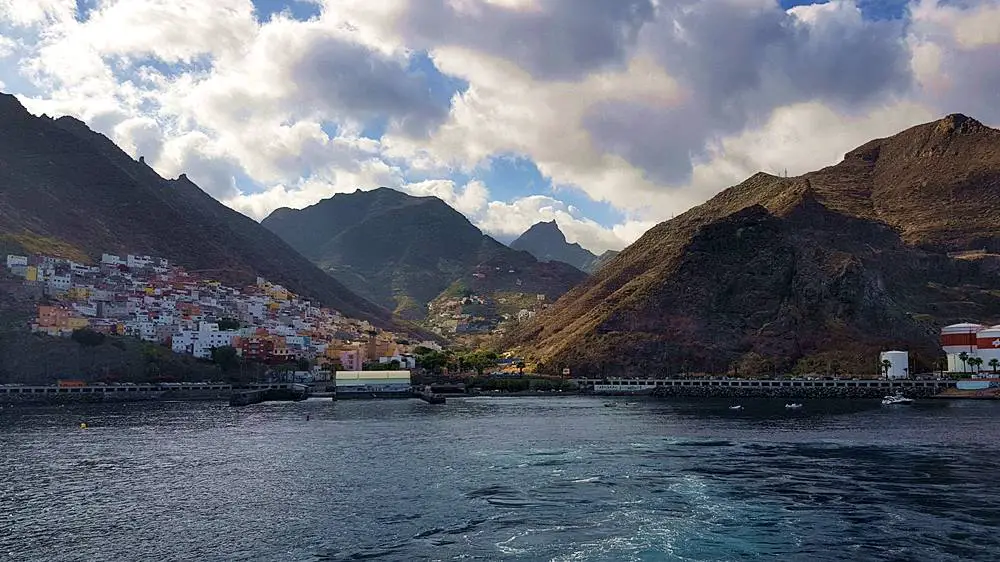
The pier runs along Avenida Los Indianos and can accommodate one large or two medium-sized ships at a time.
Some cruise lines provide a free shuttle between the terminal and the port gate, from where it’s an easy walk into the city center.
The port area is flat and accessible, so it’s convenient for wheelchair users and those with limited mobility.
You’ll also find a large parking area right by the entrance.
In addition to cruise ships, the port serves ferry connections to Tenerife, Gran Canaria, and Lanzarote.
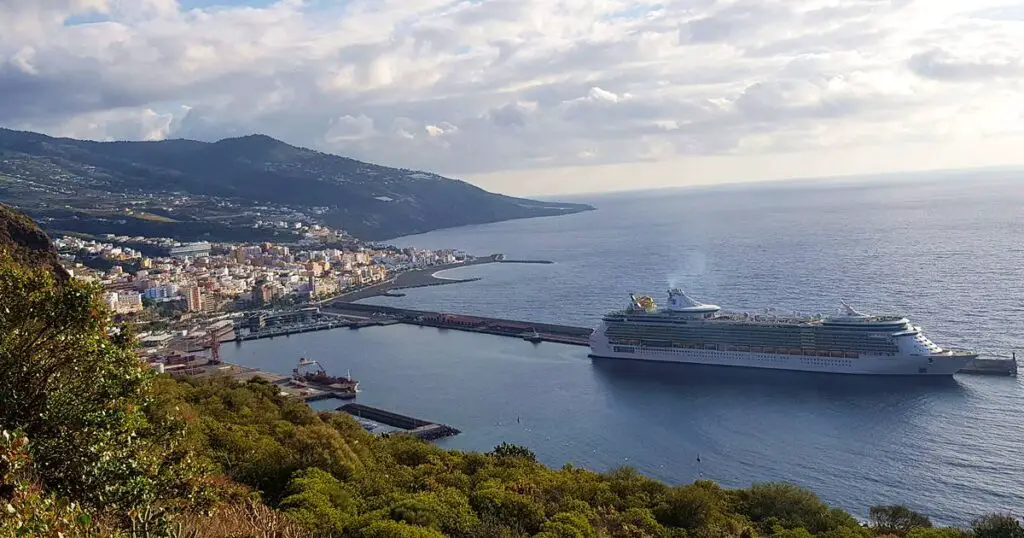
Getting Around Santa Cruz de La Palma
🚶♀️ Exploring on Foot
The port of La Palma is just a 10-minute walk from the old town and Avenida Marítima, the scenic waterfront avenue known for its colorful balconies and traditional Canarian houses.
Two streets inland lies Calle O’Daly, the main pedestrian street lined with cafés, boutiques, and historic buildings.
Santa Cruz de La Palma is compact and walkable — you can see most of it in about two hours. The port area is flat and wheelchair-friendly, though some parts of the old town are slightly hilly.
Two black-sand beaches, Playa de Bajamar and Playa de Santa Cruz de La Palma, are within a 20–25-minute walk from the cruise port.
🚗 Car Rental
If you want to explore beyond the city, renting a car is one of the best ways to experience La Palma.
The roads are well-maintained and clearly signposted, making driving straightforward. The island’s volcanic landscapes, lush forests, and viewpoints are easy to reach by car.
You can compare car rental deals here and pick up your vehicle near the port or airport.
🌋 Guided Tours & Shore Excursions
While Santa Cruz de La Palma is lovely, the island’s true beauty lies inland in its national parks, volcanoes, and dramatic mountain scenery.
I highly recommend joining a guided tour to see more of the island in one day.
👉 Check the latest La Palma tours and excursions on Viator or GetYourGuide — options include volcano hikes, scenic drives through Caldera de Taburiente National Park, and visits to local wineries or viewpoints.
🚌 Public Transport
La Palma’s bus network, operated by TILP (Transportes Insular La Palma), connects the main towns, but not all rural areas. You can check routes and timetables at www.tilp.es.
The nearest bus stops are on Avenida Los Indianos, just outside the port area (the bus station is called Estación de guaguas).
🚕 Taxis
Taxis are available right outside the terminal. You’ll find standard cars, 8-seaters, and wheelchair-accessible vehicles.
Many drivers offer half-day private tours, which can be a convenient and flexible way to explore the island.
Practical Tips for Cruise Visitors
- The tourist information center (Oficina de Información Turística) is across the street from the port entrance, next to the roundabout. You can grab free maps and local tips there.
- Currency: Euro (€). Cards and cash are both accepted, and ATMs are available downtown.
- VAT-free zone: The Canary Islands are part of Spain but outside the EU VAT area, so shopping here is cheaper than on the mainland.
- Shopping: Most shops open Monday–Saturday, 9:30 am–1:30 pm and 4:30 pm–8:00 pm. Expect a mid-day siesta. You’ll find plenty of small local shops along Calle O’Daly and Avenida Marítima, perfect for picking up souvenirs, local crafts, and Canarian products like wine, rum, or aloe vera.
- Accessibility: The port area and nearby streets are flat and easy to navigate.
- Staying overnight? Browse accommodation in Santa Cruz de La Palma — there are some charming boutique hotels near the seafront.
💡 If you’re planning a Canary Islands cruise, you might also enjoy my Mediterranean Cruise Port Guide — a detailed ebook I’ve written based on over a decade of cruise experience.
It includes insider tips, port info, and shore excursion ideas to help you make the most of every stop (including La Palma)
Top Things to Do in La Palma (From the Cruise Port)
La Palma feels different from the other Canary Islands — it’s quieter, greener, and far less crowded.
The island has a relaxed atmosphere that makes it perfect for exploring at your own pace, whether you prefer wandering through the old town of Santa Cruz or heading inland to see its volcanic landscapes and lush forests.
🏙️ Things to Do in Santa Cruz de La Palma (Walking Distance from the Cruise Port)
If you decide to stay in town and explore on foot, Santa Cruz de La Palma has plenty of attractions packed into a small area. Here are some highlights you can easily reach from the ship:
Calle O’Daly – The main pedestrian street and the heart of local life. You’ll find shops, cafés, and beautiful old buildings with colorful balconies, perfect for a relaxed stroll or some souvenir shopping.
Town Hall and Plaza de España – Right on Calle O’Daly, the historic Town Hall overlooks Plaza de España, a pretty square surrounded by palm trees and the 16th-century Church of El Salvador.
Santa Cruz Market (Mercado de Santa Cruz de La Palma) – Just around the corner from the square, this small local market is great for browsing island produce — cheeses, fruits, herbs, and the local sugarcane drink guarapo.
Avenida Marítima – The seafront avenue runs parallel to the old town and is famous for its colorful wooden balconies, the Balcones de la Avenida Marítima, often seen on postcards of La Palma.
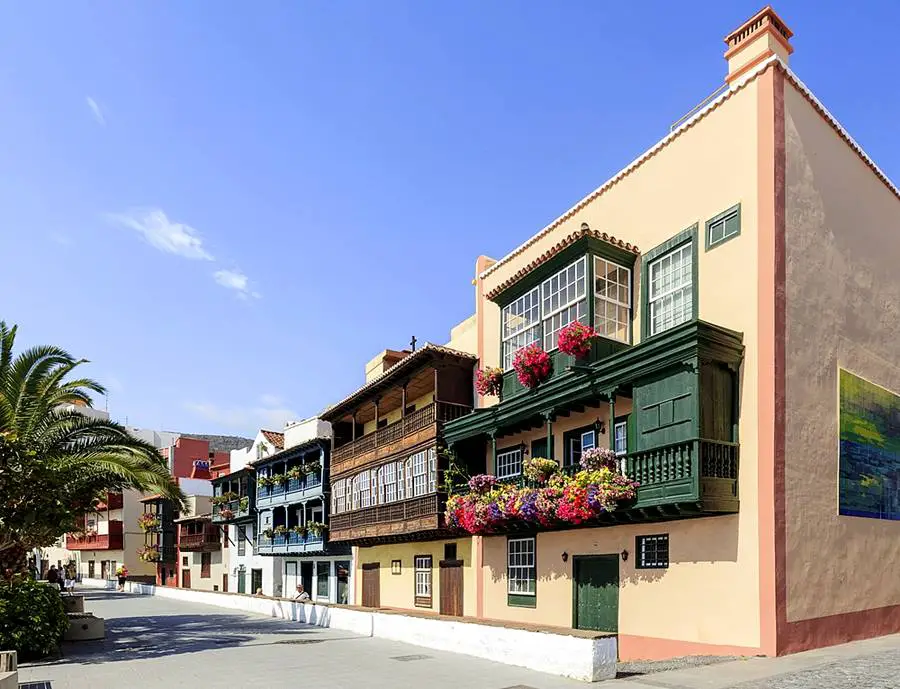
Naval Museum (Museo Naval – Barco de la Virgen) – A 20-minute walk from the pier along Avenida Marítima brings you to a ship-shaped museum that looks like one of Columbus’s caravels. Inside, you’ll find exhibits on five centuries of maritime history.
Castillo de la Virgen – Just above the museum, this small 17th-century fortress once guarded the port and now offers lovely views over the town and the Atlantic.
Church of Santo Domingo – Another beautiful old church, located on Plaza Santo Domingo, known for its peaceful courtyard and Canarian architecture.
Playa de Santa Cruz de La Palma – A long stretch of black sand along the seafront, ideal for a quick swim or a walk after exploring the old town.
Playa de Bajamar – Right across from the cruise pier, this smaller beach is protected by the harbor wall and is popular with locals looking to relax by the sea.
🌋 Best Things to Do in La Palma (Beyond the Cruise Port)
Caldera de Taburiente National Park
At the heart of La Palma lies Parque Nacional de la Caldera de Taburiente, one of the island’s most spectacular natural wonders.
This vast volcanic crater, about 10 km wide and 1,500 meters deep, was formed millions of years ago through erosion, creating a dramatic landscape of ridges, waterfalls, and pine forests.
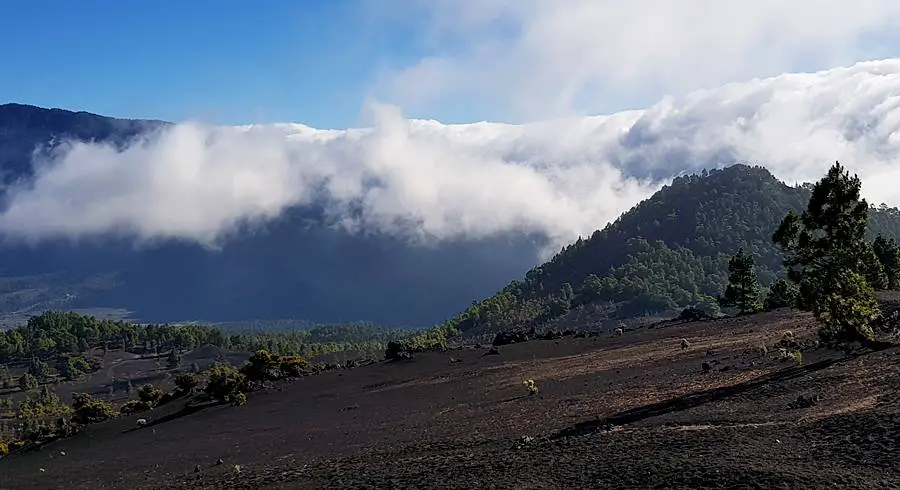
The park is a UNESCO Biosphere Reserve, home to the endemic Canary Island pine and a variety of unique flora and wildlife.
It’s a paradise for nature lovers and hikers, with viewpoints like Mirador de La Cumbrecita, Mirador de los Roques, and Lomo de las Chozas offering unforgettable views across the crater.
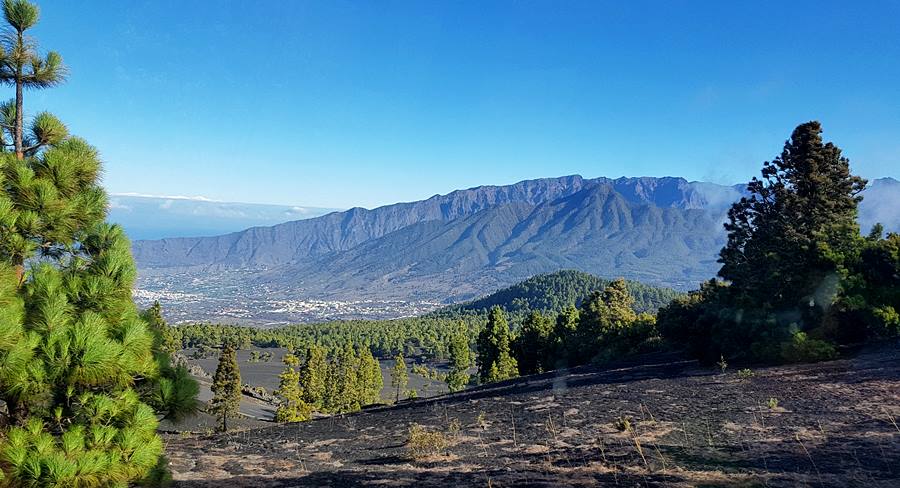
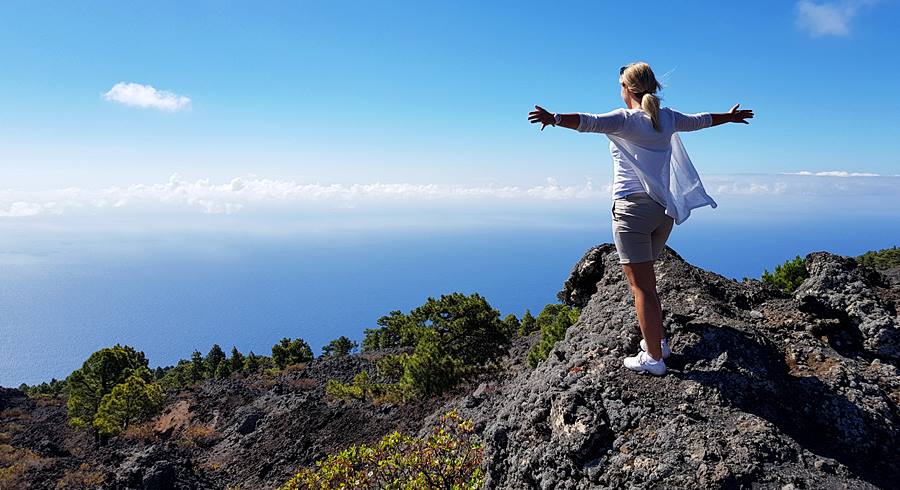
You can visit the park on your own by car, book a guided tour, or even arrange a private taxi trip that includes several scenic stops.
Hiking, photography, and off-road adventures are the most popular ways to experience this incredible landscape.
👉 If you prefer an organized experience, explore Caldera de Taburiente tours and activities.
Fuencaliente
Located on the southern tip of La Palma, Fuencaliente de La Palma is known for its striking volcanic landscapes and fertile soil where Malvasia grapes and bananas thrive.
The area is shaped by the Cumbre Vieja volcanic ridge and two volcanoes — San Antonio and Teneguía.
Teneguía last erupted in 1971, while San Antonio’s eruption dates back to 1677.
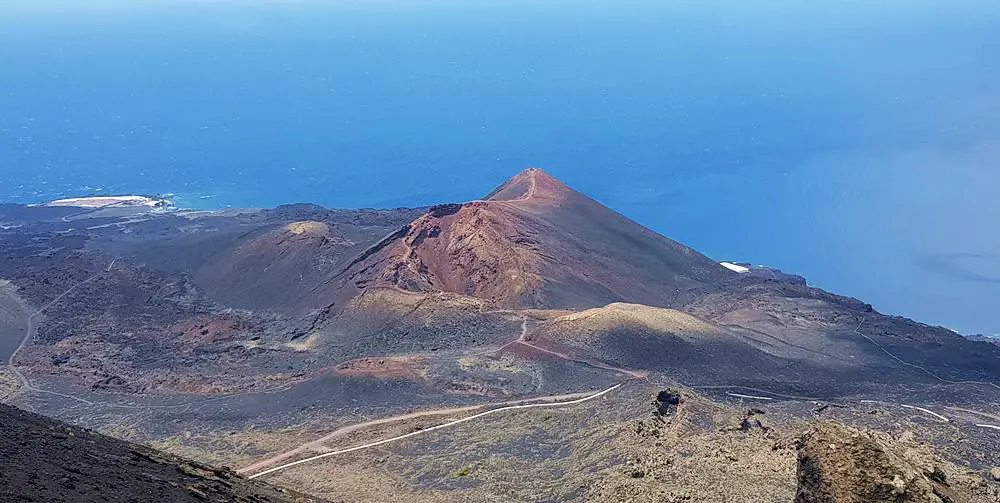
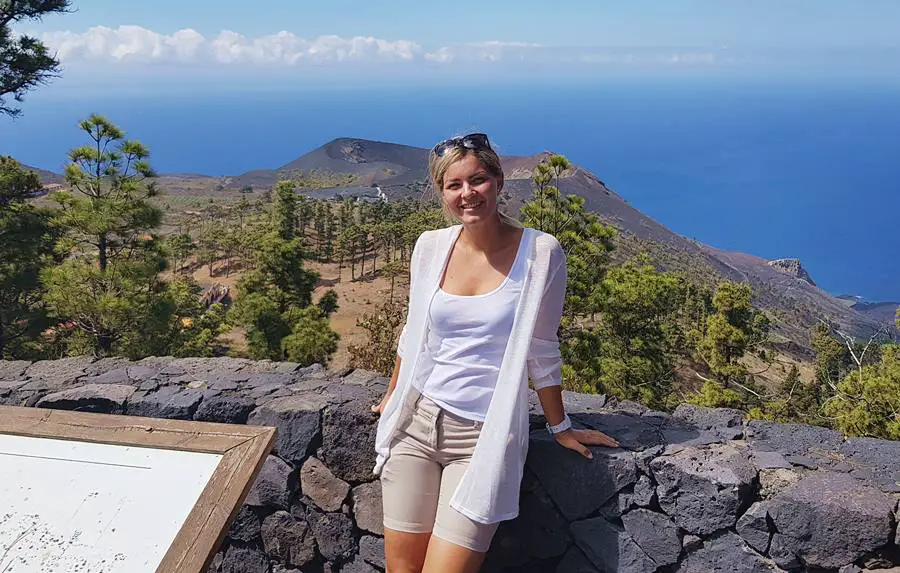
You can visit the San Antonio Volcano Visitor Center, which offers fascinating exhibits on the island’s volcanic history and overlooks the crater formed by Teneguía’s eruption.
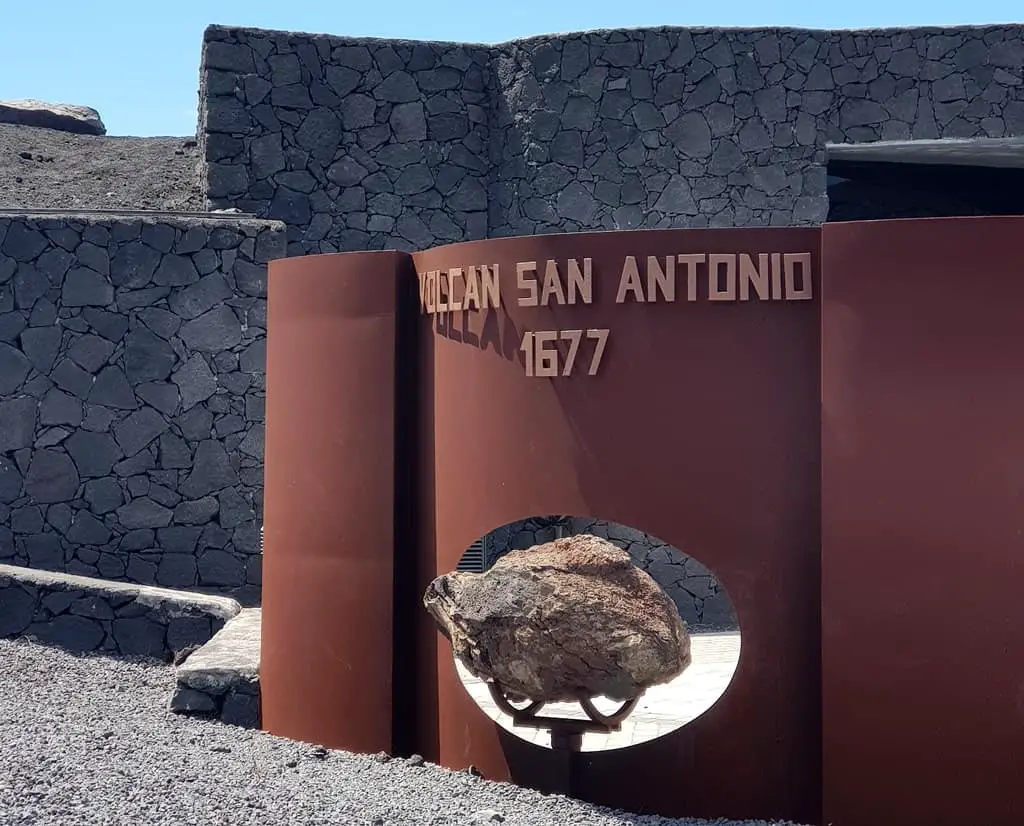
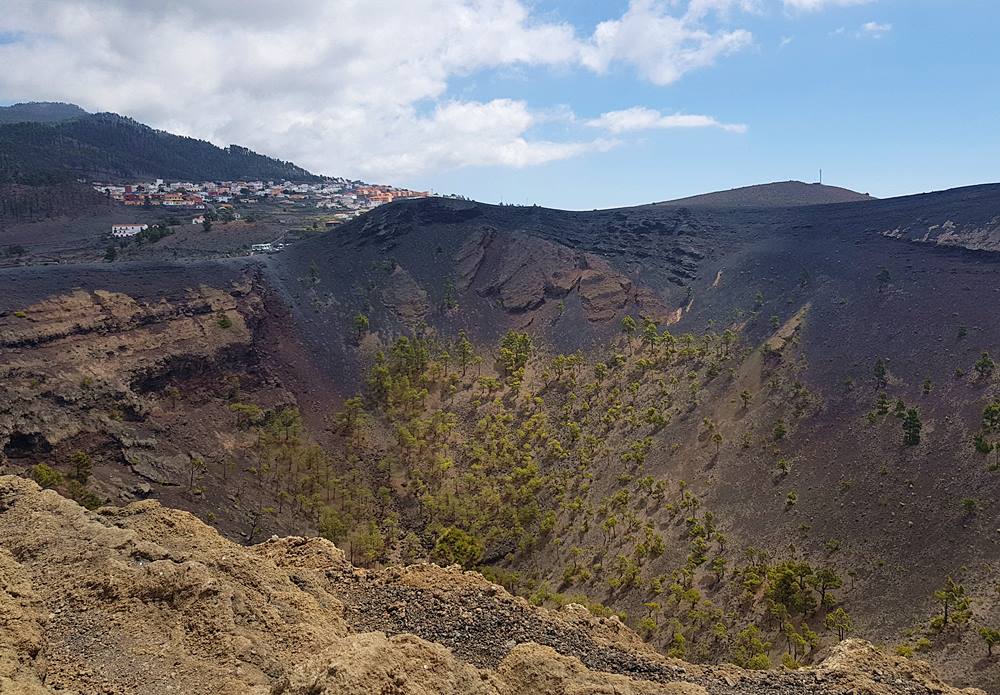
A trail runs along the rim of the San Antonio crater, offering dramatic views and the chance to see pine trees growing inside the volcano — some over a century old.
The crater itself is estimated to be around 3,000 years old.
👉 Explore Fuencaliente tours and activities for guided hikes, volcanic tours, and visits to local wineries.
Roque de Los Muchachos
Roque de Los Muchachos is the highest point on La Palma at 2,426 meters above sea level.
The name, meaning “Rock of the Boys,” comes from a cluster of small rock formations that resemble a group of children.
From the top, you’ll get panoramic views of the island, the Caldera de Taburiente, and even neighboring islands on clear days.
It’s also home to the Roque de Los Muchachos Observatory, the largest in the Northern Hemisphere, famous for its crystal-clear skies and powerful telescopes.
While access to the observatory is limited, guided visits are sometimes available — and even without entering, the drive and viewpoints are worth it.
👉 Explore Roque de Los Muchachos tours and activities for organized excursions that include transport and local guides.
Los Tilos Forest
Located in the northeast of La Palma, Los Tilos Laurel Forest is one of the island’s lushest and most peaceful areas.
This UNESCO Biosphere Reserve is home to dense greenery, waterfalls, and hundreds of endemic plant and animal species.

Several well-marked trails run through the forest, offering everything from short walks to more challenging hikes.
Stop by the Los Tilos Visitor Center to learn about the forest’s unique ecosystem and pick up trail maps before you set off.
👉 Explore Los Tilos Forest tours and activities for guided hikes and nature tours through this incredible corner of La Palma.
FAQ – Santa Cruz de La Palma Cruise Port
❓ Where do cruise ships dock in La Palma?
Cruise ships dock at Puerto de Santa Cruz de La Palma, about a 10-minute walk from the old town. Some cruise lines offer free shuttles to the port gate, but it’s an easy and pleasant walk into the city.
❓ Can you walk to the town from the cruise port?
Yes — the town center is within walking distance of the port. Once outside the terminal, you’ll reach the main pedestrian street, Calle O’Daly, in about 10 minutes.
❓ Is Santa Cruz de La Palma easy to explore on foot?
Absolutely. The town is compact and very walkable. Most attractions, shops, and restaurants are within a short distance. Just note that parts of the old town are slightly hilly.
❓ What are the best things to do near the port?
You can visit Calle O’Daly, Plaza de España, the Naval Museum, or relax at Playa de Santa Cruz de La Palma — all close to the pier. If you have more time, join a tour to explore the island’s volcanic landscapes and viewpoints.
❓ Are there beaches near the cruise port?
Yes — there are two black-sand beaches within walking distance: Playa de Santa Cruz de La Palma along Avenida Marítima and Playa de Bajamar near the pier.
❓ How do you get around La Palma from the port?
You can get around by taxi, rental car, or guided shore excursion. Public buses (TILP) also connect Santa Cruz with other towns, but they don’t reach all parts of the island.
❓ What currency is used in La Palma?
La Palma uses the Euro (€). Credit cards are widely accepted, and ATMs are available throughout the town.
❓ Are shops open when cruise ships are in port?
Most shops open Monday to Saturday, 9:30–13:30 and 16:30–20:00. When ships are in port, many stay open during midday hours too, especially around Calle O’Daly and Avenida Marítima.
❓ What is La Palma best known for?
La Palma is known for its lush nature, volcanoes, and starry skies. It’s the greenest and least crowded Canary Island, perfect if you enjoy hiking, scenic drives, or quieter surroundings.
Helpful Resources for La Palma Cruise Port
🌐 Useful Websites
- Find the port of Santa Cruz de la Palma on Google Maps
- La Palma Cruise Ship Schedule
- La Palma Port Authority
- La Palma Tourism Office
- Local Weather Forecast
⚓ Other Ports Often Included in the Itinerary
If you’re planning a stop in La Palma, your cruise may also include these ports:
- Tenerife (Santa Cruz de Tenerife) – home to Mount Teide and vibrant city life.
- Gran Canaria (Las Palmas) – famous for golden beaches and dunes of Maspalomas.
- Lanzarote (Arrecife) – known for volcanic landscapes in Timanfaya National Park.
- Madeira (Funchal) – lush gardens, cable car rides, and oceanfront views.
- Lisbon – historic tram rides and views from Alfama.
- Cádiz – gateway to Seville and Andalusia’s culture.
- Málaga – access to Granada and the Alhambra Palace.
- Vigo & La Coruña – ports along Spain’s scenic northern coast.
- Bilbao – home to the world-famous Guggenheim Museum.
- Palma de Mallorca – beaches, cathedral views, and charming Old Town.
You may also like our cruise port guides to the Mediterranean, Caribbean, Northern Europe, USA & Canada, Middle East, Australia & New Zealand
Adventour Begins contains affiliate links. If you make a purchase through these links, we may earn a commission at no additional cost to you. For more details, please see our Disclosure Policy




